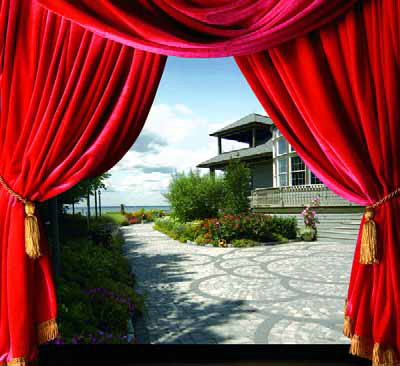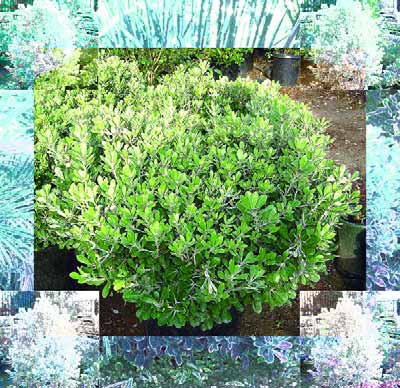Landscape, Plants, Hardscape & Decks
When I paint, I constantly play with color on canvas and experiment with various combinations to see what works well and discover what, to my eye, clashes or doesn't seem to mix harmoniously. As a landscape designer, I'm aware of working through the same sort of process when I discuss color with clients - determining their likes and dislikes and narrowing the color palette down to those hues, values and intensities that are most appealing to them. Some aren't even aware until I launch into a discussion with them that they have particular tastes involving the color wheel. In my experience, all these clients lean
As landscape professionals, most of us seek not only to innovate and drive the industry to new levels, but also endeavor as necessary to learn about basic design principles and styles that have inspired and ignited design movements in past centuries. By studying the range of architectural and landscape styles that have gone before us, we learn to use historical cues to guide us in our current tasks. At the same time, our knowledge of what was done in the past positions us to develop variations on themes and do things
Conserving water in a serious way is something many of us have had to do at one time or another. Whether it has resulted from drought or some other condition affecting local supplies, we know that any sort of shortage has significant implications not just for us, but for our communities, clients and landscapes as well. In those landscapes, water conservation is about finding ways to reduce water use and coming up with more efficient ways to use it. This is essential to ensuring the survival of plants (and our livelihoods) and has to do with giving gardens the amount of water they need to thrive: Too little, and plants will shrivel up and die; too much, and many will drown just as surely. For the most part, what landshapers encounter is the need to cope with shortfalls and pronounced dry spells rather than floods, which is why most professionals install irrigation systems that make it easier for
For many years, I sat on the sidelines and watched others learn to use CAD to their professional advantage. I'm a fine artist by background and training and have always had great confidence in my ability to draw freehand. But I also yearned to become proficient with computers because I was convinced they'd streamline my work, offer me additional tools that would facilitate expansion of my business and, overall, make me a better landscape architect. I was completely
It often happens that the way people enter a space has everything to do with the way they experience it and come to regard its overall design. This was much on my mind as we concluded our work on the Long Beach Island project I've discussed in my last few "Details." By orchestrating access and movement toward the backyard/pool area, we developed a string of transitions that lend a sense of surprise and delight to those entering a beautifully designed and constructed space that literally seems like a world apart. As discussed in previous columns, the backyard features a
It may seem an odd source of inspiration, but I've always been interested in retaining walls. Even as a child, I'd see photographs of terraced hillsides rich with crops and wonder, "How did they do that?" I've since done my homework and have found historical evidence indicating that the skills needed to build these structures goes back many hundreds of years. I'm now applying those same skills today in devising soil-retaining systems for my clients. Whether it's farmers creating flat spaces on which to
In looking back over several recent projects, I noticed that I've been using one particular genus of plants more frequently than just about any other. Its name probably evokes thoughts of petri dishes and bacterial colonies for most of us, but this plant genus - Pittosporum - has truly held an extremely valuable position in most of my plant palettes in recent years and is one of the most useful of all plant types I use. I find myself pointing them out every time I take clients to a nursery to view and select plants, and it seems I'm always trying to find ways to fit one or more of its many varieties into my planting plans. I treasure them for their great variety in
In my years as a practicing landscape architect, I've found that designers love in particular to borrow elements from the Spanish Colonial style of architecture. In fact, it has become one of the most important and influential of all architectural forms. This archetypal architecture flourished between the 16th and early-19th centuries in the New World and is based upon historical models established in
As is true of many things we savor in our lives, our perception of texture is filled with subtlety and nuance. This is particularly true in gardens, where space, form, color and texture dance together to create our experience of a living entity and, for designers and installers, of the envisioned entity as well: We start by defining the entity's function and style - make it an outdoor room, a neoclassical knot garden or a meditative space - then layer hardscape and plant materials to engage the five senses one by one or all at once. Texture plays a large role in creating this sensory engagement: It's the lure that invites observers to pause and linger, to breathe deep and compose themselves within the environment. In that sense, texture is the twin of form and the companion to color in the triad of basic garden relationships. Texture also involves an
When someone calls and asks you to "landscape my home," what does it mean? Are you going over to put plants and trees in the ground, or will you be rolling in with backhoes to install a pond? This initial uncertainty is why, before any project begins in earnest, there are questions to be asked. It's also why there are measurements to be taken, elevations to be shot, sketches and more sketches to be drawn, meetings to schedule and plans to present. Then, maybe, a working design will develop and then, maybe, construction will start. Gathering information and doing the foundation work on a design takes research, patience, experience and time, and it's never






















